This post is part of the How To… series – how to classify sandstones using QFL plots
In science, classification of things is one of those tasks we readily identify as a crucial component of knowledge but prefer that someone else does it. Classification schemes don’t just name things, they organize them according to their properties, appearance, structure, composition. If I wish to talk about a particular rock or fossil, then the people who are interested in such things will have a frame of reference to understand and contribute to the discussion, based on whatever classification scheme applies.
The classification of sandstones matured in the 1940s through 1960s; many publications were devoted to the subject; some of the key players were Robert Folk, Harvey Blatt, Francis Pettijohn, Raymond Siever, P. Krynine, E. McBride, H. William, F Turner, C Gilbert, Robert Dott, and R. Fisher. Several schemes were proposed and debated; few were accepted. One of the central topics of discussion was the relative importance of sandstone texture versus sandstone composition. A classification based on texture alone was deemed inadequate; if the rock or sediment had >50% sand, then it was a sandstone, or arenite. Qualifications such as pebbly, silty or muddy might be applied, but this said nothing about the variability of mineral types. However, textural properties such as the percentage of matrix (clay plus silt) did provide grounds for distinguishing between ‘clean’ sandstones (i.e. those lacking significant matrix) and wackes – those rocks containing significant matrix.
It has long been recognised that the mineralogical composition of sandstone contributes a great deal of knowledge about the sources from which the sediment was derived, the potential changes in composition during sediment transport, and depositional histories. This, in turn tells us something about tectonics, for example the contrasting composition of sediment derived from mountain belts versus stable cratons (note that the unifying theory of plate tectonics was still 2 to 3 decades away). Thus, there is a convincing argument that clast composition should be incorporated into classification schemes.
Diligent petrographic analysis and point-counting of terrigenous sands and sandstones (over the same historical period) demonstrated that the dominant framework grain types are quartz, feldspar and lithic fragments (QFL). Today, the popular classification schemes incorporate these three components in triangular QFL ĺplots like the one shown below, originally constructed by R.H.Dott, (1964, Journal of Sedimentary Petrology, v. 34, p. 625-632) and later modified by Pettijohn, Potter and Siever, (1973 Sand and Sandstone, Springer-Verlag). For comparison, I have added R.L. Folk’s 1966 classification of terrigenous sandstones (from Folk, 1968, Petrology of Sedimentary Rocks).
In this scheme, sand-dominated rocks and sediments carrying less than 15% matrix are called arenites; those with 15-75% matrix are wackes, and >75% matrix, mudstones. Note that the percentage matrix is relative to the percentage of framework.
In Dott’s scheme the different varieties of quartz and feldspar are lumped into their respective end members. Folk has taken this a step further where a distinction is made between potassium feldspars and plagioclases. Likewise, in Folk’s scheme the lithic end member is subdivided into volcanic, metamorphic and sedimentary varieties. Note that chert presents an interesting problem – pure chert consists of micro- and cryptocrystalline quartz but varieties transitional to mudstone-shale are common. Dott and Folk treat chert as a lithic fragment (several other classifications also do this), whereas some schemes treat chert as a variety of quartz.
A quartz arenite (also known as orthoquartzite) has 95% or more quartz. A rock having feldspar content >25% and subordinate lithics is an arkosic arenite or arkose; those with >25% lithic fragments and subordinate feldspars are lithic arenites.
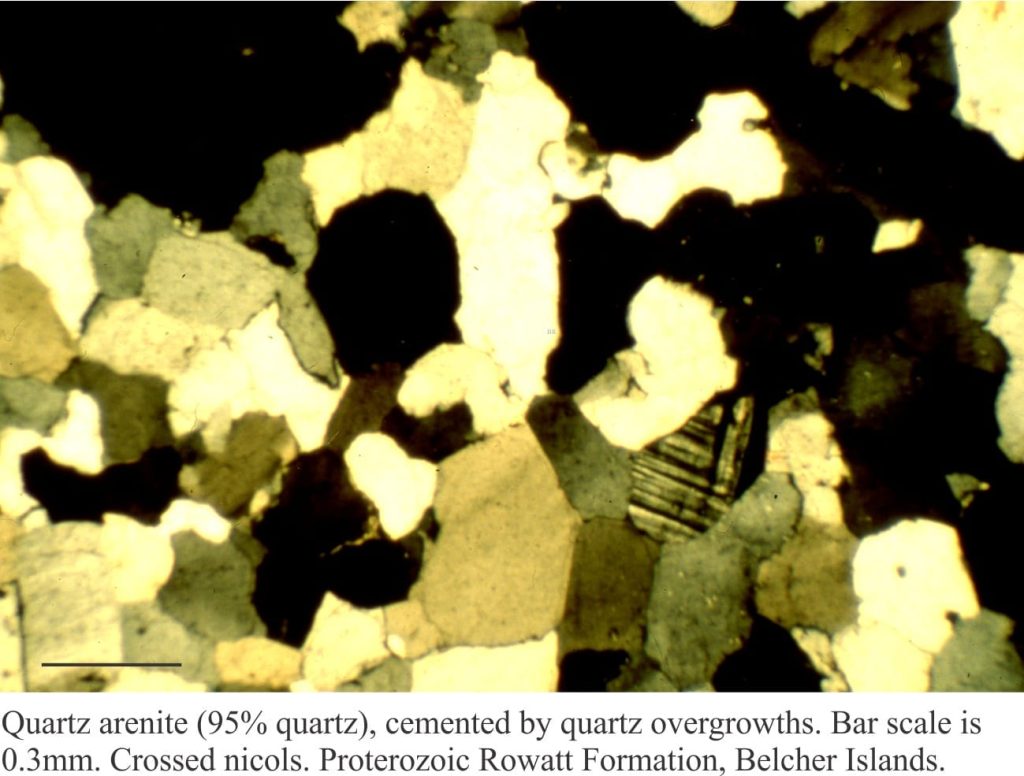
The real value of Dott’s scheme lies in its three dimensionality that visually incorporates the real-world continuum between arenites, wackes and mudstones. The QFL end members are extended to the wacke realm such that we can designate quartz, feldspathic (or arkosic) and lithic wackes.
Classification schemes are never perfect. The classifications illustrated here can be applied to most terrigenous deposits with a bit of tweaking. Folk chose to split the arenites, particularly the lithic end member, to accommodate source rock variability. But there are some sediment types that don’t fit the ‘norm’. QFL plots simply don’t apply to black sands that contain abundant magnetite, ilmenite, amphiboles and pyroxenes (usually of volcanic origin). Nor do they apply to sands that are a mix of bioclastic carbonate and terrigenous material – the bioclasts certainly do not qualify as lithics. Note that calclithite in both the schemes presented here refers to reworked fragments of limestone and dolostone; it does not apply to first-cycle carbonate fragments such as bioclasts or ooids – a separate classification scheme is required for this class of carbonate sediment.
Some other useful links
The mineralogy of sandstones: Quartz grains
The mineralogy of sandstones: Feldspar grains
The mineralogy of sandstones: lithic fragments
Describing sedimentary rocks; some basics
Analysis of sediment grain size distributions
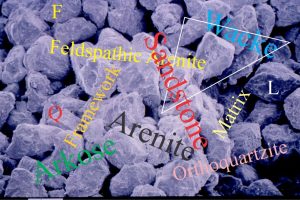
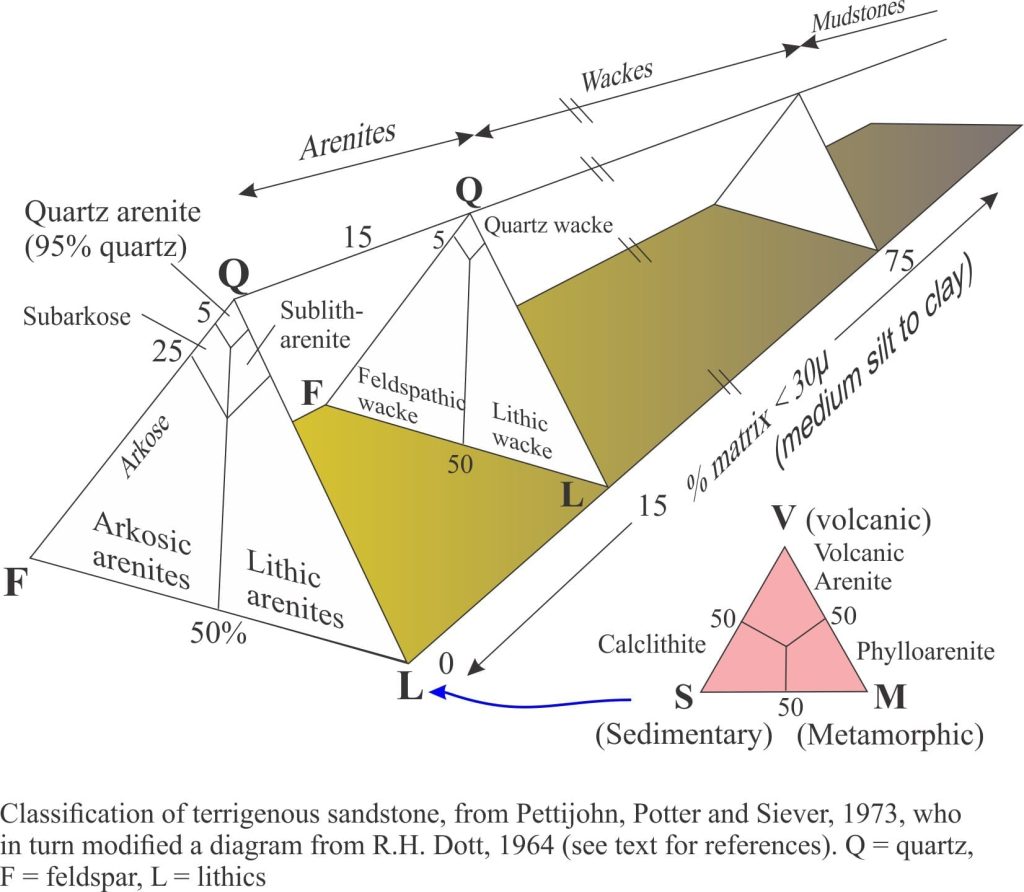
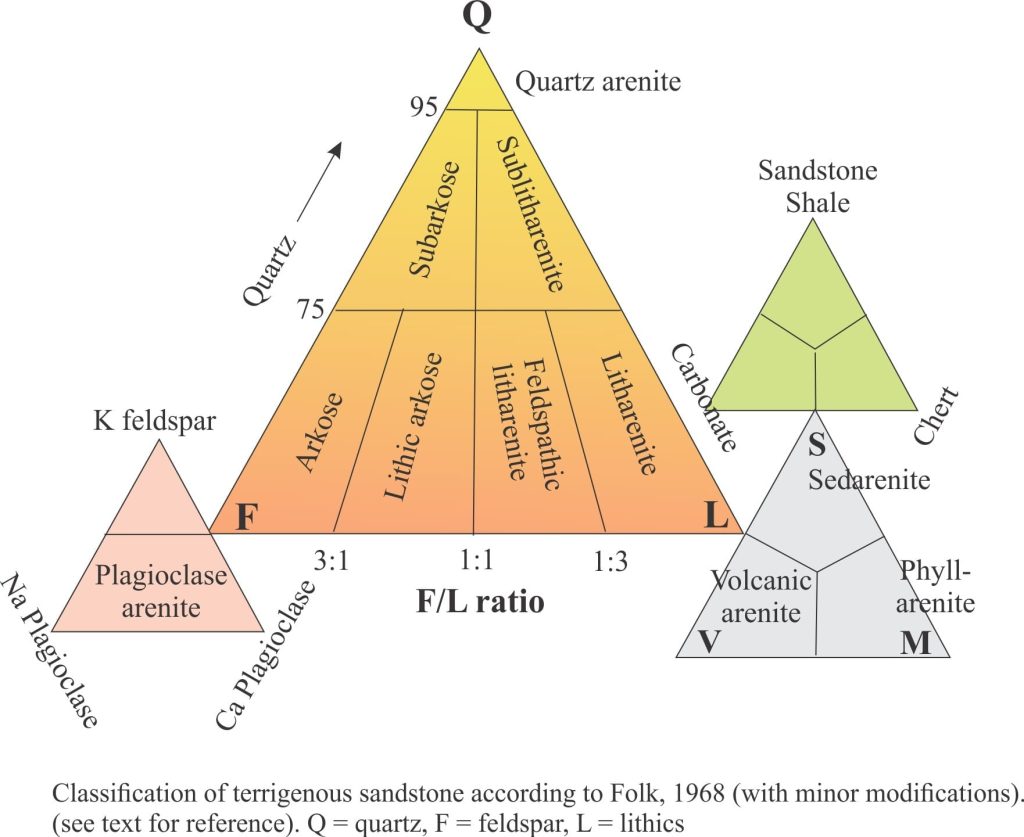
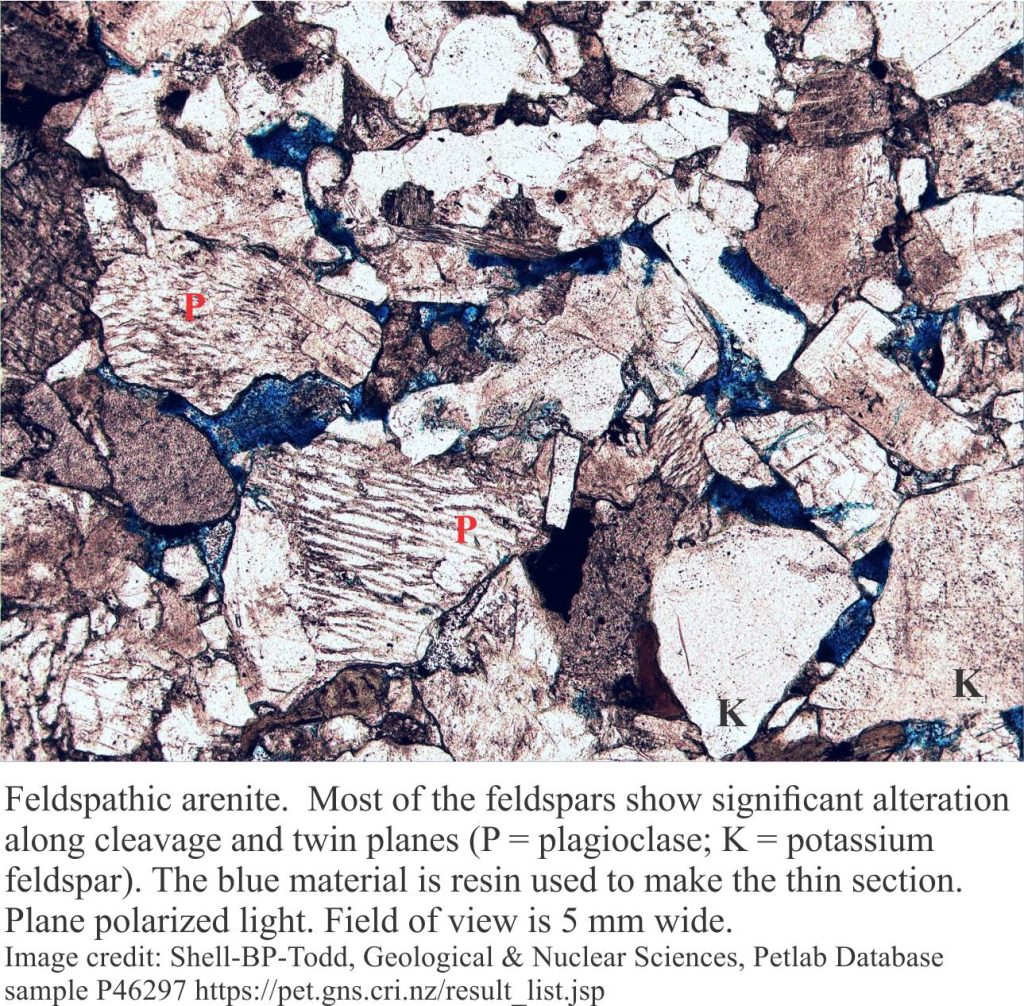
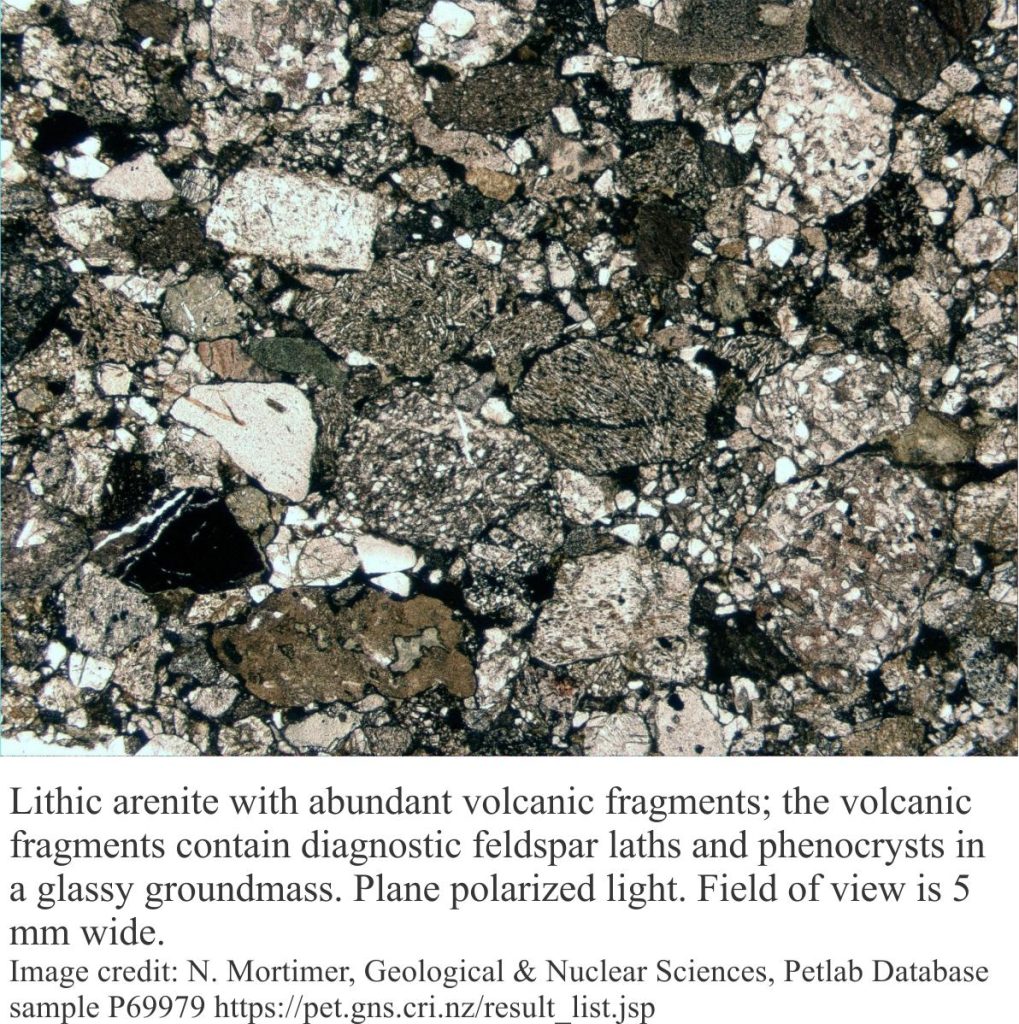


















1 thought on “Classification of sandstones”
I’m a nervous photographer/artist here lately I’ve been viewing microscopic fossils in crystals quite interesting. I would like to share some of the photos. I’ve gathered viewing these fossils in the crystals if you’d be interested, please get back with me